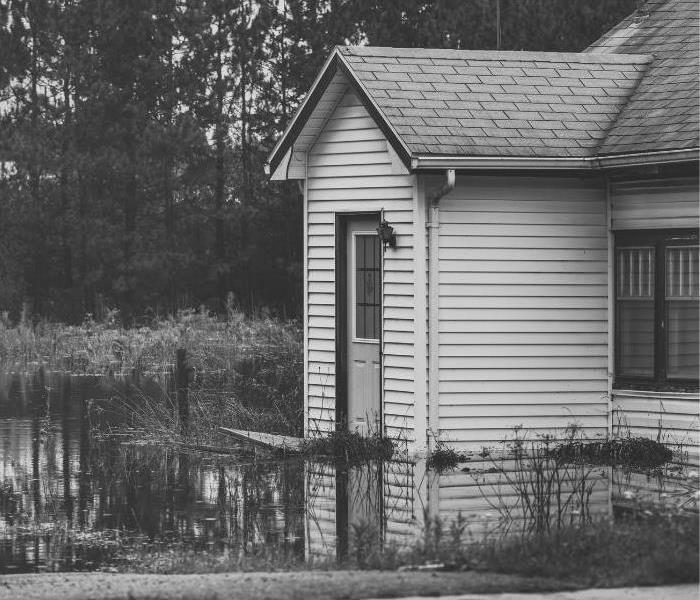Recent Water Damage Posts
Safeguard Your Investment: Types of Basement Waterproofing to Ensure Your Home's Longevity in Southeast Nashville
6/6/2023 (Permalink)
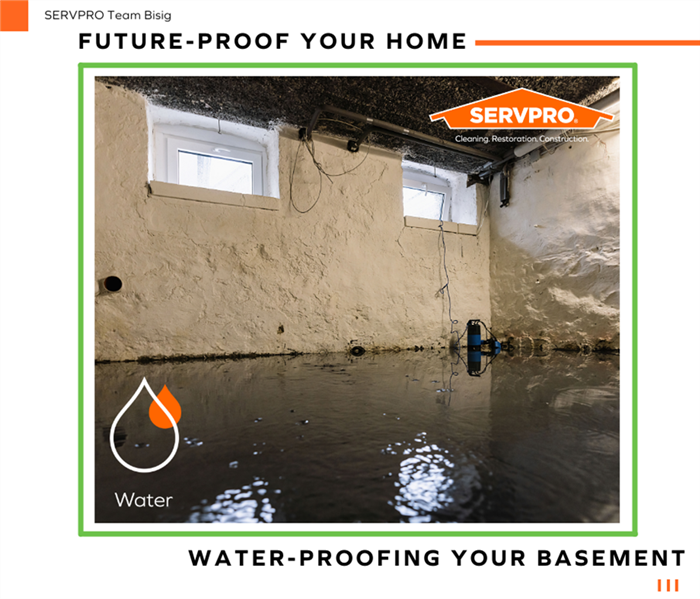 Whether you live in Nashville, Percy Priest, or Hickory Hollow, our water damage restoration team is here to help you 24/7/365
Whether you live in Nashville, Percy Priest, or Hickory Hollow, our water damage restoration team is here to help you 24/7/365
Purchasing a home in Southeast Nashville is a significant milestone and undoubtedly a considerable investment. To ensure your home's longevity and value, taking proactive steps to prevent water damage should be high on your list of priorities. By investing in basement waterproofing and promptly enlisting the help of professional water damage restoration services at the first hint of an issue, you can protect your precious asset from the devastating effects of water.
Preemptive Waterproofing to Safeguard Against Water Damage
Initiating waterproofing measures can save you from future headaches and financial stress. Although there's an upfront cost to consider, the benefits of waterproofing in the long term make it an investment that pays off in spades.
Understanding Home Structures and Their Waterproofing Needs
The diverse range of basement structures in Southeast Nashville homes implies varied waterproofing requirements. Each type, be it a full basement, a partial one, or a crawl space, comes with its unique set of challenges. Full basements provide more usable space but are more prone to water intrusion, while crawl spaces might seem less at risk due to their size, but inadequate protection can result in moisture build-up leading to mold and structural damage.
Choosing the Right Waterproofing Approach
Selecting the best waterproofing method depends on the type of basement your home has and the specific issues it poses. Some prevalent strategies include:
- Interior Sealants: Application of water-resistant sealants on interior walls and floors can ward off minor dampness and condensation. These sealants are often used to treat localized leaks and cracks.
- Interior Water Drainage: This is one of the most effective methods to prevent water accumulation in your basement. It involves creating a channel inside the basement floor along the perimeter, collecting water and directing it to a sump pump system.
- Exterior Waterproofing: This method, also known as "positive side waterproofing," involves applying a waterproof coating or membrane on the outside of the basement wall to prevent water from entering the structure.
- Exterior Drainage System: Similar to interior water drainage, this system manages water at the exterior of the foundation and directs it away from your home.
- Drainage Enhancements: Upgrading your drainage system can prevent water from pooling around your home's foundation. Techniques may involve installing French drains, sump pumps, or regrading your lawn to divert water away from your home.
- Crawl Space Encapsulation: This technique requires the installation of a heavy-duty water vapor barrier in the entire crawl space, protecting it from ground moisture and helping to maintain the structural integrity of your home.
- Sump Pump Installation: A sump pump is a crucial part of many basement drainage systems. It collects water and pumps it away from your home's foundation, keeping your basement dry.
- Crack Injections: This is a technique typically used for poured concrete foundations where cracks have started to appear. The cracks are injected with a material (usually epoxy or polyurethane) that fills the crack from inside to outside, thus waterproofing the area.
- Basement Tanking: This is a method commonly used in Europe, where a waterproof coating or membrane is applied to the interior face of the basement walls to prevent water ingress.
- Cavity Drain Systems: This system includes the creation of a cavity (using studded membranes) on the basement walls and floors. Any water entering through the walls is controlled and diverted to a suitable drainage point.
Remember, the best method for your home will depend on a variety of factors, including the type of foundation, soil conditions, and the specific challenges presented by your home's structure. Always consult a professional for personalized advice.
By waterproofing your basement or crawl space, you offer your home robust protection against persistent dampness that can compromise its structural strength. This step helps you avoid expensive future repairs and increases your property's value, making it a selling point if you ever decide to list your home. Essentially, waterproofing is an investment towards your home's longevity and worth.
Prompt Action and the Importance of Water Damage Restoration
Despite preventative measures, water damage can still strike, often due to unexpected events like severe weather. In such situations, immediate action and the engagement of professional water damage restoration services are crucial. The faster you respond, the less damage is done, and the lower the overall restoration expenses will be.
Our SERVPRO of Southeast Nashville team offers extensive expertise, experience, and state-of-the-art equipment. We’re equipped to tackle visible water damage, but more importantly, we can identify and mitigate hidden issues, such as concealed moisture, mold growth, and structural instability.
The Combined Benefits of Waterproofing and Water Damage Restoration
Waterproofing and water damage restoration are two complementary services that together provide a holistic approach to safeguarding your home's future. While waterproofing forms your first line of defense against water damage, restoration services are there to mend and recuperate your property if damage does occur. Together, they offer a comprehensive solution to protect your home from water's destructive effects.
Investing in your home today through preventative measures like waterproofing and promptly securing reliable water damage restoration services when necessary, will save you time, money, and future distress. Our seasoned professionals at SERVPRO of Southeast Nashville are ready to help your home stand the test of time. Contact us today to learn how we can assist you in protecting your home from potential water damage.
The ABCs of Water Damage Restoration: Understanding the Different Types of Water Damage and their Restoration Processes
2/20/2023 (Permalink)
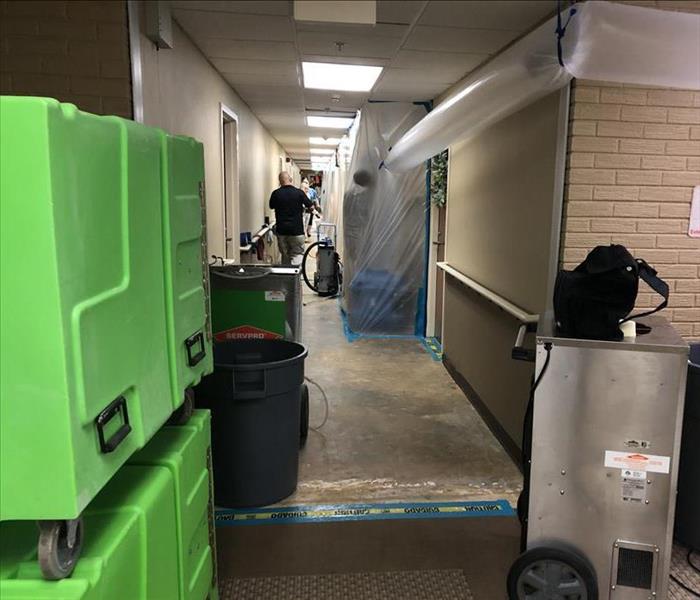 SERVPRO water damage restoration team at work in the hallway of a commercial restoration project in Nashville, TN
SERVPRO water damage restoration team at work in the hallway of a commercial restoration project in Nashville, TN
Water damage can be devastating to a property, regardless of the source. Whether it's a flood, a burst pipe, or a leaky roof, water can cause significant damage to your home or business, leading to costly repairs and potential health risks. Understanding the different types of water damage and their restoration processes can help you better prepare for and respond to water damage events.
In this blog post, we'll break down the three categories of water damage and the restoration processes associated with each.
Category 1 Water Damage: Clean Water
Category 1 water damage is the least severe and easiest to clean up. It refers to water that is clean and free from contaminants, such as water from a burst pipe or rainwater.
Restoration Process: The restoration process for Category 1 water damage typically involves the following steps:
- Water Extraction: The first step in any water damage restoration process is to remove the water. This involves using specialized equipment to extract water from the affected areas.
- Drying: Once the water has been extracted, the drying process begins. This involves using dehumidifiers and air movers to dry out the affected areas and prevent the growth of mold.
- Cleaning: After the area has been dried, cleaning and disinfecting the affected surfaces is necessary to prevent the growth of bacteria and other harmful organisms.
Category 2 Water Damage: Gray Water
Category 2 water damage is more severe than Category 1 and requires more extensive restoration efforts. Gray water is water that contains some level of contaminants, such as water from a dishwasher or washing machine.
Restoration Process: The restoration process for Category 2 water damage is more complex than Category 1, involving the following steps:
- Water Extraction: The first step in the restoration process is to extract the water from the affected areas, using specialized equipment.
- Drying: After the water has been removed, the drying process begins. This step may take longer than in Category 1 water damage, as the water may have seeped into porous materials, such as carpets and upholstery.
- Sanitizing: The next step is to sanitize the affected areas to eliminate bacteria and prevent mold growth. This may involve using specialized products to clean and disinfect surfaces.
- Restoration: The final step in the restoration process is to repair or replace any damaged materials or structures, such as flooring or drywall.
Category 3 Water Damage: Black Water
Category 3 water damage is the most severe and dangerous type of water damage. It involves water that is highly contaminated, such as sewage or floodwater. This type of water damage poses a significant health risk and requires immediate and extensive restoration efforts.
Restoration Process: The restoration process for Category 3 water damage is the most complex and may involve the following steps:
- Water Extraction: The first step in the restoration process is to extract the water from the affected areas, using specialized equipment.
- Disinfecting: After the water has been removed, the area must be disinfected to eliminate harmful bacteria and other organisms.
- Decontamination: If the water has come into contact with porous materials, such as carpeting or drywall, these materials must be removed and replaced to prevent the growth of mold and bacteria.
- Restoration: The final step in the restoration process is to repair or replace any damaged materials or structures, such as flooring or drywall.
Water damage can be a costly and dangerous problem for any property owner. It's important to understand the different types of water damage and the restoration processes involved in each category. Category 1 water damage is the least severe and easiest to clean up, while Category 2 and 3 require more extensive restoration efforts.
No matter the category of water damage, it's crucial to seek professional help from a reputable water damage restoration company, like SERVPRO of Southeast Nashville, to ensure that the restoration process is done efficiently and effectively. Our team of experts is well-equipped to handle any water damage situation, providing 24/7 emergency services and state-of-the-art restoration techniques. Don't hesitate to reach out if you're in need of water damage restoration services.
3 Easy Home Maintenance Tips to Help You Prevent a Water Damage Event: SERVPRO of Southeast Nashville
3/5/2022 (Permalink)
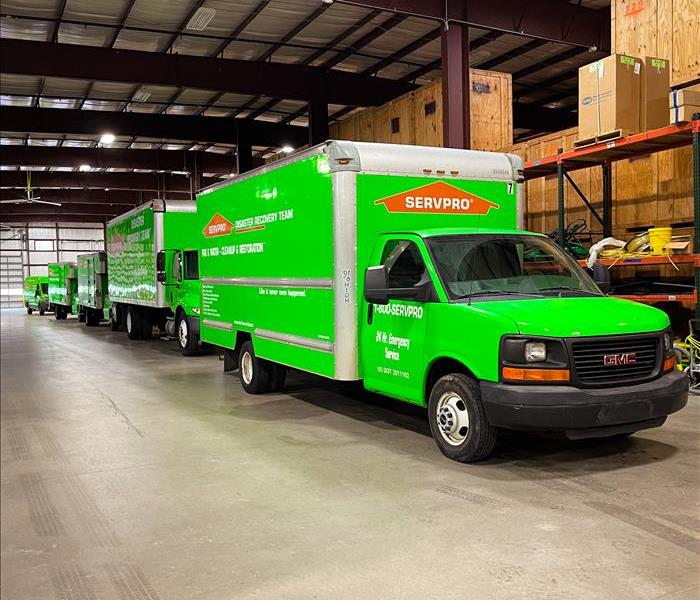 SERVPRO of Southeast Nashville keeps its trucks ready to respond immediately to your water damage emergency.
SERVPRO of Southeast Nashville keeps its trucks ready to respond immediately to your water damage emergency.
Water damage can be a costly and devastating event. At SERVPRO of Southeast Nashville we have often found that careful maintenance can diminish the risk and costs of water damage restoration. The water damage restoration process can be stressful, but by following some simple home maintenance tips, you can help prevent flooding from structural or maintenance issues in your home.
1) Assess your water heater to minimize water repair risk.
Water heater issues are common when it comes to our emergency water cleanup calls in Nashville, TN and Hickory Hollow, TN. With regular maintenance, you can prevent a surprise water heater flood in your home. Make sure the water heater's thermostat is regulating the temperature properly to prevent pressure buildup that can cause a water leak.
If you notice an odd taste or odor in the water from your water heater, it may have rust or sediment buildup inside. Also, if your water starts to make strange noises, it could need inspection or replacement to prevent a surprise flood.
2) Inspect your appliance hoses and connectors for leaks and replace them if they start showing wear.
Look for any cracks, kinks, unraveling, wear, or corrosion on the hoses and connectors. If you find any damage, replace them immediately. Most manufacturers and plumbers also recommend replacing water hoses and connectors every 3-5 years to prevent surprise water damage issues.
3) Replace old caulking in your windows and doors to prevent wet areas and moisture around the windows.
We often get calls for mitigation work in Hickory Hollow, TN and Nashboro Village, TN for this kind of restoration work. Caulking your windows can not only stop water leaks but also help to keep out drafts. It is a simple process that you can do yourself. Most window caulks should last about five years, but you should inspect your caulking every year and replace it if you notice any cracks developing or if you see it pulling away from the window.
You should also check your exterior door flashings for holes or rust that can allow water entry. If your doors are properly caulked, you can also help prevent premature flashing failure.
We are Here to Help for All of Your Water Repair Needs
If you or someone you know needs water damage restoration service, our team at SERVPRO of Southeast Nashville is Here to Help!
Save our number for the future or call today for rapid response from our IICRC trained water restoration technicians.
Call today! (615) 731-4222
How To Handle Cleaning Up After a Sewer Backup
2/23/2022 (Permalink)
 It's very challenging to deal with sewer backup.
It's very challenging to deal with sewer backup.
Cleaning Up After a Sewer Back-Up
Water damage is challenging enough when you are dealing with a burst or broken pipe, but it gets even more challenging when you are dealing with a sewer backup. Cleaning up after a flooded toilet or another major sewer malfunction in Antioch, TN, means not only drying the area and cleaning the affected home furnishings and belongings, but also disinfecting all the affected areas. That’s why it’s important to work with a professional sewer cleanup service that has the tools to handle the job.
Discovering the Problem
1. Turn off the water to the toilet or other appliance affected by the sewage backup.
2. Contact the cleanup service and your insurance carrier.
3. Keep pets and kids clear of the affected areas.
4. Contact repair services to fix the cause of the backup.
Any cleanup that requires thorough disinfection as part of its process presents a strong risk to human health and well-being from unprotected exposure. It’s important that you make sure to minimize any human exposure to the affected areas of your home until after you have gotten professional help with sewer cleanup following the accident.
Using Sewer Backup Cleaning Specialists
Water damage and restoration companies carry certifications that tell you what kinds of emergencies they are certified to handle. When you are dealing with a flooded toilet or a sewer that has backed up, you need to find a company whose employees are certified to deal with sewage and other biohazards. That way, you know they will use the proper disinfectant cleaning protocols during your cleanup.
Repairing Your Plumbing
You will probably need to line up a plumbing service in Antioch, TN, in addition to your cleaning service, but not always. If you do need a plumber, make sure you let the cleaning crew finish, so any contaminated areas are disinfected. When sewer cleanup goes first, the repair can be completed more quickly and efficiently.
Get the Facts About Secondary Damage After a Flood
1/29/2022 (Permalink)
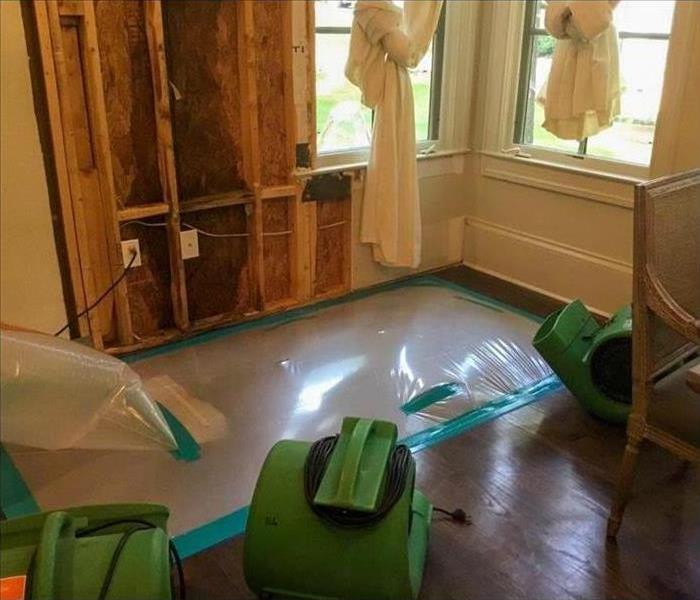 Drying equipment placed inside a home in Nashboro Village, TN.
Drying equipment placed inside a home in Nashboro Village, TN.
Secondary damage is a term used to describe factors such as high humidity and black mold. Water damage can develop fast in Nashboro Village, TN, and it usually does not take long for significant problems to result. You should be aware of what damage can happen and what to do about it so that you can take the appropriate action.
Understanding Types of Secondary Water Damage
You should know what the different types of secondary water damage are in order to know what to look for following a flood or similar water problem. The following are what you should be aware of:
- Mold growth, which can start to occur in as little as 24 hours
- Corrosion of certain metal components and materials
- Damage to your personal belongings and elements, such as flooring and walls
- Electrical damage if the water is able to penetrate sockets and anything else powered by electricity
- Wood rot when wood is allowed to remain wet for a prolonged period of time
Employing the Proper Cleaning Techniques
Beginning cleanup quickly can be imperative to saving your possessions. If you get started with cleaning up excess water fast enough, you may be able to prevent, or at least reduce, black mold and other damage. Make sure to get all of the water out after shutting off all utilities to the impacted area. Run a dehumidifier and open windows to finish drying out the space. From here, you may want to use warm water and detergent that produces limited suds to thoroughly scrub the space. Once you complete this task, go back over everything with a sanitizing solution, and make sure that it dries completely.
You are now aware of the issues that can result from black mold and other types of secondary water damage. With this information, you have the knowledge necessary to better detect these problems and eradicate them as quickly as possible.
Helpful Tips for Safely Dealing With Contaminated Water
12/28/2021 (Permalink)
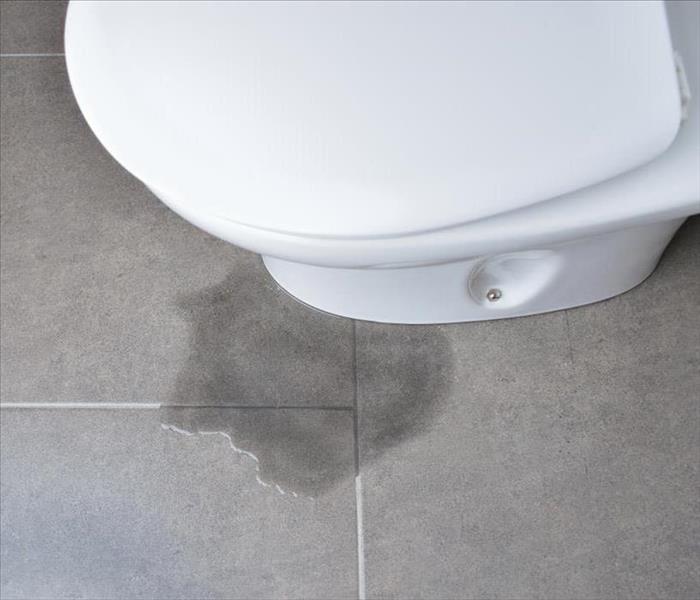 A leaking toilet in Smith Springs, TN.
A leaking toilet in Smith Springs, TN.
Tips for Dealing With Contaminated Water Safely
When water enters your home uninvited, it can be tainted with any number of unwanted pollutants. Some types of water damage might be relatively harmless to you and your family, but others may pose a real threat and require professional intervention. The three categories of contaminated water include:
• Category 1 – Water that is clean and free from contaminants that could be harmful to humans.
• Category 2 – Sometimes called grey water, this water contains physical, chemical or biological impurities that can be considered hazardous.
• Category 3 – Also known as black water, this water is heavily polluted with any variety of dangerous toxins, including human waste.
Source Before Color
While each classification may include references to color, do not judge the problem on color alone. The source of the water entering your residence can be crucial when it comes to determining which category of contamination is present. For example, a seeping toilet may appear to be only leaking clear water, but that water could be flowing from a tainted supply line. There may be unseen fecal contaminants that could place this water damage firmly in Category 3.
Safety Before Solutions
Finding the source of the contaminated water is a great way to determine what kind of problem you may have, but it may not be the safest course of action for you and your family. Discovering you have a Category 1 water issue from an overflowing bath may be straightforward, but safely assessing the source of a Category 3 leak can be hazardous work, and consulting with a professional is always prudent. If your bathtub is overflowing, for example, feel free to step away from this article and turn off the tap, but if you suspect (or are unsure) that your water leak could be polluted, take more cautious measures and contact the professionals immediately.
It is important to remember that there are several different categories of water contamination, and while you may feel confident in handling some problems on your own in Smith Springs, TN, it is always prudent to consult with a water contamination expert when dealing with contaminated water.
How to Keep Your Office's Toilet From Clogging and Overflowing
11/30/2021 (Permalink)
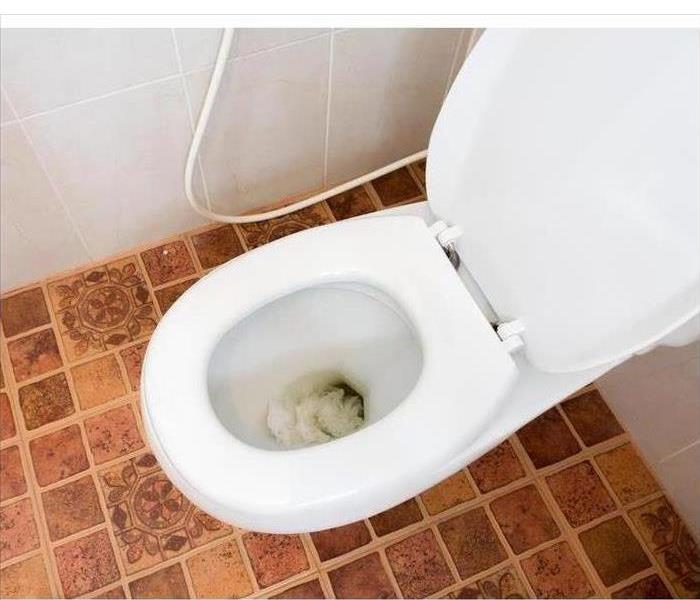 Clogged toilet.
Clogged toilet.
How to Keep the Toilet in Your Office from Clogging and Overflowing
Every office becomes inconvenienced when there’s a clogged toilet. You can prevent this from happening at your business in Nashville, TN by following some key recommendations. Overflow Causes
If it’s already too late, these major causes may be the source of your problem:
- A blocked vent pipe. When external air is unable to enter, flushing becomes impossible. This can usually be cured using a plumber’s snake.
- A jammed up drain. In these instances, the bowl can overfill. Such obstacles are typically handled with plungers.
- A broken float mechanism. When this device becomes too high, your tank fills with excess water, causing spillage. Solving this may require a simple adjustment. Otherwise, the entire component could need replacement.
An overflowing or otherwise clogged toilet can always be repaired, but your best option is to avoid the messy situation altogether.
Overflow Prevention
Flushing items other than toilet paper is one major cause of toilet overflow. Common culprits include paper towels, diapers, and feminine hygiene products. Post signage that reminds employees of proper disposal procedure. Excessive toilet paper can also trigger sewage catastrophe, so include wording that encourages multiple flushes. To reduce temptation, equip your bathrooms with ample wastebaskets. Additionally, consider stocking thinner toilet paper. While less comfortable, it will also save you money.
Blockages sometimes stem from compromised sewer lines, often caused by tree roots. When this happens, a plumber becomes necessary. Eliminating growths is expensive and time-intensive, so use an off-the-shelf solution to inhibit roots before they arise. Stoppages can also be caused by hard water, which creates difficult-to-remove calcifications. Regularly use water softeners to alleviate this issue. Low flush commodes can be problematic because they generate low water pressure. If clogging persists, you might need to install different toilets.
Easy, preventative measures can keep your company’s toilets running smoothly. Should a clogged toilet disable your restroom, however, hire a commercial cleaning team to get your facility looking “Like it never even happened.”
How Bad is Water Damage to my House? Understanding the Important Factors
11/10/2021 (Permalink)
In a water damage event in Hickory Hollow, TN, there are several factors that contribute to whether water damage will be bad for your home. This quick guide is meant to shed light on the factors to consider when determining whether the water damage in your home or business may be serious enough to require professional attention.
The first factor to consider is the category of water intrusion. There are 3 main categories of water, and they are each determined by how contaminated the water is.
Category 1 would be water from a clean water source with little to no risk of causing sickness.
Category 2 water contains a certain degree of chemical, biological, and/or physical contamination. This could be water from a dishwasher drain line for example.
Category 3 water is grossly unsanitary water that may contain pathogens such as a sewage backup.
The quantity of water and potential rate of material evaporation can also be a critical factor in determining how bad the water damage may be to your home. These are typically divided into 4 main Classes.
Class 1 water damage is the least damaging. This type occurs when less than 5% of building materials have absorbed or been affected by water. This class can be cleaned up quickly and easily. This class of water damage may not require professional assistance unless mold is involved.
Class 2 water damage occurs when the water in affected building materials can evaporate quickly, however water in this class has penetrated materials and can begin to show signs of permanent damage if not treated swiftly. Typically, a class 2 water intrusion affects between 5%-40% of an affected area's surfaces.
Class 3 water damage is when water intrusion has affected greater than 40% of an area's surface, and low evaporation materials have also absorbed water. Class 3 water intrusion should always be handled by professionals to limit permanent damage to building materials.
Class 4 water intrusion is called a specialty drying situation. These materials take the longest to dry because water becomes bound with the material's molecules and requires specialty drying equipment to dry properly. Class 4 intrusion usually takes the longest to occur, but also the longest to dry.
These factors along with the types of affected building materials may increase the potential for hazardous pre-existing conditions to be worsened by the water damage.
Hazardous materials like asbestos or lead may be harmful to your health and definitely require professional attention. It’s also important to consider the risk of electrical shock or gas leaks when wiring junctions or joints are involved.
While there are many more factors to consider when determining how bad water damage may be to your house, our team of professionals is Here to Help if you need immediate assistance. With our team of trained technicians at SERVPRO of Southeast Nashville, we’ll make sure to leave your home "Like it never even happened."
Call us today at (615) 731-4222
The SERVPRO ERP: The Importance of the Emergency Ready Profile
9/26/2021 (Permalink)
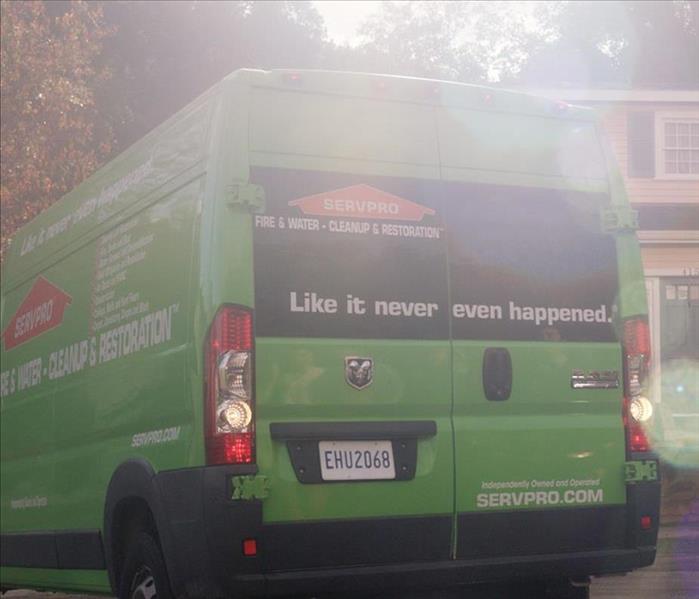 An ERP is an excellent way to protect your business and your interests.
An ERP is an excellent way to protect your business and your interests.
As a leader in restoration and disaster prevention, the professionals at SERVPRO have your business’s best interest at heart. One of the ways they are looking out for your business is through Emergency Ready Profiles. The creation of an emergency profile allows you to work with a qualified representative to develop a plan of action for when disaster strikes.
1. What Is It?
An Emergency Ready Profile is a file created for your business that contains an emergency plan of action. This profile allows you to minimize any prolonged business interruption by ensuring that SERVPRO is ready and prepared to help with a simple phone call.
2. How Can It Help?
The ERP helps provide you with a level of security that many do not have after experiencing a disaster. After assessing your facility, identifying a line of command, and establishing an emergency profile, you will know that when disaster strikes, a qualified professional has your back and knows just what to do and who to contact.
3. Does It Matter for Your Business?
The research doesn’t lie: After a disaster strikes, many businesses — about 50 percent — have to close down. Having an Emergency Ready Profile in place allows SERVPRO to take action immediately following a disaster. By taking fast action, you can limit business interruption, meaning that you can get back to doing what you do best as quickly as possible.
4. How Can You Get Started?
You can get started creating your emergency profile by contacting a SERVPRO representative in the Smith Springs, TN, area or logging onto the ERP app. Once you have initiated contact, a representative will reach out to find out the best time to schedule your facility’s free assessment.
An ERP is an excellent way to protect your business and your interests. You can call a local representative for help in creating your business's Emergency Ready Profile today.
Should All Plumbing Noises Be Investigated?
6/28/2021 (Permalink)
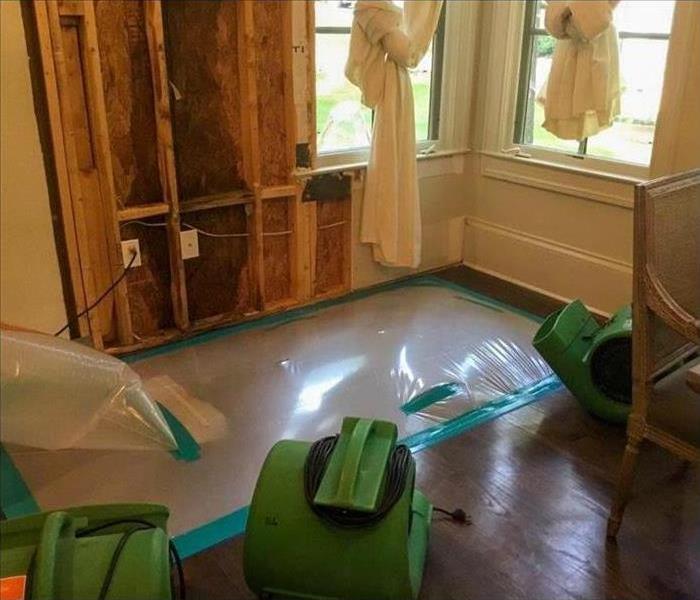 Water damage to a home in Nashboro Village, TN.
Water damage to a home in Nashboro Village, TN.
Are Noisy Water Pipes Dangerous?
As a homeowner, you know that your Nashboro Village, TN, house can make some strange noises. You've noticed creaking and groaning in the middle of the night, but you don't know if these noises should be concerning to you. The truth is some noises could be precursors to other issues, such as a pipe break, damaged walls, or malfunctioning water heater. When you hear strange noises that could be coming from your piping, it may be best to call in a residential water damage professional. You can also use this quick guide to help you figure out if the noise you hear should be concerning to you.
Recurrent Sounds
If the noises coming from your walls are repeated frequently, it could be a sign of an upcoming pipe burst. Common sounds you may hear include:
Whenever sounds are heard regularly, it may be a good idea to call in a plumber to have your pipes inspected. What type of issues do these common noises point to? Whistling is often associated with clogs, knocking is tied to pressure changes, and ticking is linked with heat-related expansion. Getting to the cause of the noise may help you fix a broken pipe before it bursts.
One-Time Sounds
If you hear a banging one time after you turn off a faucet quickly, it may not need to be investigated. Isolated noises coming from your pipes often aren't linked with a pipe break. Instead, these singularly occurring sounds are often associated with the settling of your house. Of course, it doesn't hurt to be safe. You can still call in a plumber or water damage expert to make sure the noises are not indicative of a bigger problem.
You may not think of your plumbing as being noisy, but sounds can emanate from this internal structure of your house. Some noises could point to an upcoming pipe break, so it may be a good idea to have a professional inspect the noises.
3 Categories of Contaminated Water Explained
3/9/2021 (Permalink)
 Drying services in Nashville, TN.
Drying services in Nashville, TN.
If you have flooding or water damage in your Nashville, TN home, it's important to understand what category of water caused it. The source determines the category of contaminated water and will affect how it is cleaned up.
Category 1 Contamination
Water in the first category is the cleanest. It comes from sanitary sources like:
- A broken supply line
- Overflowing water from a sink or tub
- A leaking ice maker
Category 1 water generally does not pose a risk to humans. It can be removed using vacuums, dehumidifiers and air movers. Even though Category 1 water is mostly clean, you should begin the drying process as soon as possible to avoid mold growth and secondary damage, such as warped floors, wet drywall or ruined furniture.
Category 2 Contamination
Water in Category 2 is also known as gray water. It includes dirty water from dishwashers and washing machines, aquariums, toilet overflow with urine and water beds. Water from Category 1 may become Category 2 water after 48 hours. It's best to remove affected carpet and padding because the organic material in gray water, along with moisture, can encourage mold growth.
Category 3 Contamination
Another name for Category 3 water is black water. This type of contaminated water results from an overflowing toilet containing feces, a sewage line or rising floodwaters. Floodwaters are considered Category 3 because they might contain chemicals like fertilizer, or organic material like animal feces or sewage backup. Category 2 water becomes Category 3 water if left untreated for more than 48 hours. Black water contamination is an emergency situation. A professional restoration company with special equipment can remove it and replace or restore your home's affected contents.
While no one likes to think of the possibility of flood damage or contaminated water in Nashville, a restoration company can help you safely remove and clean up water damage if the need arises.
How To Keep Toilets From Overflowing
2/11/2021 (Permalink)
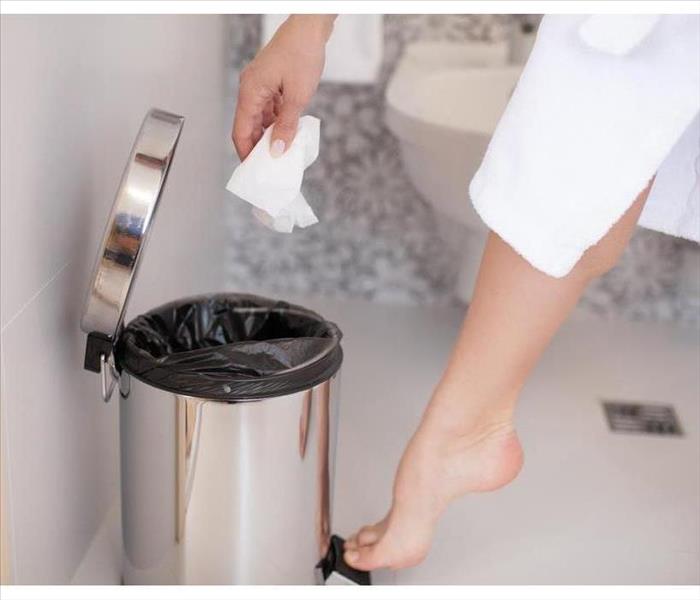 Have trashcans available.
Have trashcans available.
Tip To Keep Your Toilet From Overflowing
Every business has struggled with a clogged toilet at some point. The best way to prevent this from happening is to use these tips to keep your toilet from overflowing.
Use Signs and Plaques
Many people do not know what is flushable and what is not. Some things that claim to be flushable can wreak havoc on your plumbing. Non-flushable items include:
- Wipes and tissues
- Feminine products
- Napkins and paper towels
- Oils and plastics
All of these can and will cause toilet overflow and blockage problems. Having signs about what is flushable and what can't be flushed not only informs people but can help prevent them from putting odd items into your toilets.
Have Trashcans Available
The simple placement of trash receptacles in each stall and the bathroom's main portion can help prevent a clogged toilet. Remember, you also have to keep these receptacles clean so that they don't overflow and stop patrons from using them.
Correct Slow Drains Promptly
If you have a major overflow problem, you will have to involve a sewage remediation company in Nashville, TN to take care of it, but if your drains are just slow, you might be able to do it yourself. Use proper drain clearing techniques and consult a plumber if necessary. Correcting slow drains helps to stop major issues later on.
Use the Right Toilet Paper
Although it might not seem like it, the very thing that is supposed to be flushable might not be. To check if your toilet paper meets the requirements, you can use a bowl of water. Put a small amount of the tissue in the bowl and leave it for an hour or two. If it mostly dissolves, it's good. If it doesn't, you might want to consider changing brands.
A clogged toilet is a serious issue for any business. Although nothing can completely prevent it from happening, there are a few things that can help you mitigate your risk.
Reconsider Reaching for the Drain Cleaner
12/28/2020 (Permalink)
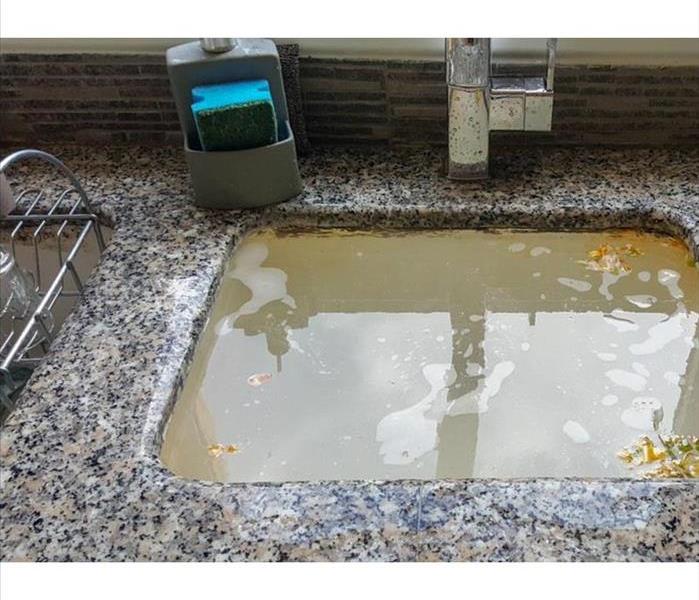 A clogged drain is one of those hassles that eventually happens
A clogged drain is one of those hassles that eventually happens
A lot happens in your Nashville, TN and it’s not always something wanted, such as a clogged drain. While it may be easy to reach for the drain cleaner to get things flowing down as they should, it may not be the best option. It’s important to consider what these cleaners are made of and the potential damage they may cause.
Types of Cleaners
Most off-the-shelf cleaners are formulated with ingredients that produce heat to help break up clogs. There are three main types:
- Caustic – Lye and caustic potash
- Oxidizing – Bleach, peroxide, and nitrate
- Acid – Sulfuric and muriatic
Each of them is designed to transfer or remove electrons to organic substances, such as hair and food, to produce the heat needed to break them down. Unfortunately, you may not always know the true reason for the clogged drain. If oils, grease, or fats are the culprits, the cleaner only pushes the clog further down and may not resolve the problem. For homes with older metal or plastic pipes, the chemicals can begin to warp or melt the piping, which may lead to a burst pipe that requires the assistance of water damage and restoration specialist.
Save Your Pipes
Instead of grabbing a chemical solution, it’s often better to consider a mechanical or biological one. A plunger or drain snake is often more efficient in clearing out the clog without doing any damage. Another option is an enzymatic cleaner. It contains natural living bacteria that eat away at the clog and are more environmentally friendly. For situations in which a clog keeps returning or it won’t come unclogged, it may be time to call in a professional for proper sewage cleaning. As experts in their field, they will be able to solve your problem without damaging your pipes.
A clogged drain is one of those hassles that eventually happens. Even though it seems like a small ordeal, unclogging it the right way is important to avoid a much bigger problem down the road.
3 Tips for Avoiding Homeowners Insurance Rate Increases
11/24/2020 (Permalink)
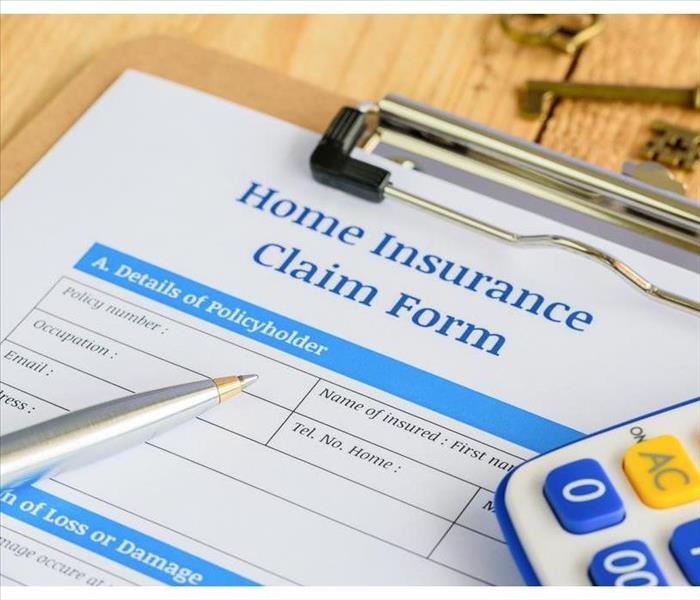 Home insurance claim form
Home insurance claim form
3 Tips for Avoiding Homeowners Insurance Rate Increases
Filing a homeowner's insurance claim cannot only lead to an increase in your current insurance rates but also may affect the premiums of future insurance policies. However, there are steps you can take to reduce the chances your insurance rates will go up due to collecting on the policy.
1. Do Not File Claims for Minor Damage
The more claims you make, the more likely your insurance company may increase your rates, cancel your policy or refuse to insure your property. One way to decrease the chances of this happening is to avoid filing claims for minor damage. For example, if your home has water damage from a broken pipe that caused a few kitchen tiles to peel up, it may be better to replace the tiles out of pocket than to file for reimbursement.
2. Keep Your Home in Good Condition
A poorly maintained home is more likely to be damaged in a home flood or other disaster. Keep your roof patched and replace it when needed. Seal any leaks around the windows and doors. Fix any leaking plumbing and repair or replace broken appliances. If you need to file an insurance claim, be sure to mitigate your damage by cleaning up standing water promptly and covering holes in the roof, windows or siding with plywood or tarp. If there is a lot of water in your home, you may want to consider having a water remediation company in Nashville, TN, dry it out thoroughly.
3. Consult Your Insurance Professional
If you are unsure whether to file a claim or not, ask your insurance agent. Your policy is there to be used when you need it so do not be afraid to ever file a claim.
Rate increases are affected by several factors, including how often you file an insurance claim. Reducing the number of times you file can help you avoid rate increases.
5 Signs You Have a Leaky Shower
10/14/2020 (Permalink)
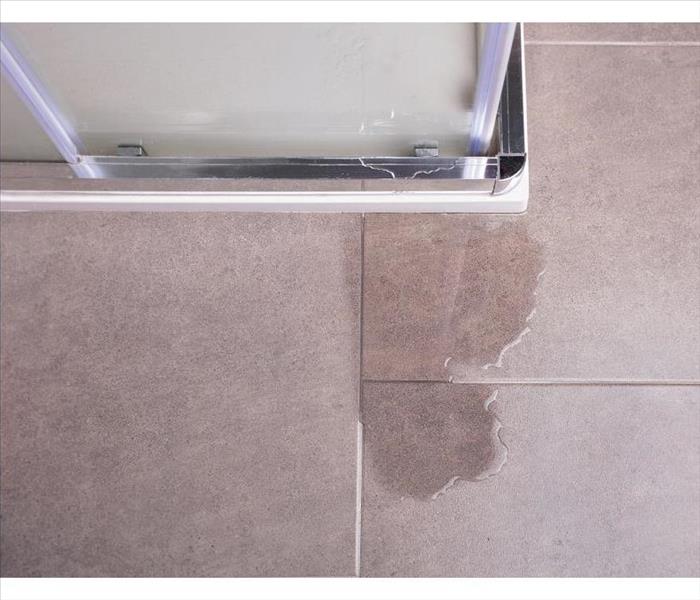 Shower leak in Percy Priest, TN
Shower leak in Percy Priest, TN
Five Signs You Have A Leaky Shower
A shower or bathtub leak may seem like a small issue, but the residual water damage can wreck havoc on your home if left untreated. If you suspect that your home in Percy Priest, TN, is dealing with a shower leak, then you need to act quickly in order to prevent subsequent issues, such as unwanted mold growth. Here are five tell-tale signs that you have a leaky shower.
1. Water Stains on the Ceilings
Check the ceilings on the floor directly below your bathroom. If you notice ugly, brown water stains spreading across the ceiling then you probably have a leaky shower. If your ceiling is sagging or noticeably bulging, then you need to contact professional help immediately.
2. Cracked or Stained Bathroom Tiles
Bathrooms face a lot of moisture and water on a daily basis, so their flooring is naturally able to resist a bit of splashing. However, they can only handle so much water. Cracked or stained bathroom tiles are indicative of problems such as a shower pan leak or other types of water damage.
3. Mold or Mildew Growth
Mold and mildew both thrive in moisture, making your bathroom the perfect place for them to grow. While occasional mold growth isn't necessarily indicative of a larger problem, you may want to start investigating if you notice that the fungi are reappearing regularly.
4. Warped or Stained Walls
Check for damaged paint and wallpaper on your walls. Any cracks or chips could indicate a shower or bathtub leak. In extreme cases, the walls might bulge or warp as a result of the excess water building up behind them. If that's the case, you need to contact professional help.
A shower or bathtub leak can cause irreparable water damage if left untreated. If you notice one or more of the above signs, then you need to contact water remediation experts to help resolve the issue.
 Whether you live in Nashville, Percy Priest, or Hickory Hollow, our water damage restoration team is here to help you 24/7/365
Whether you live in Nashville, Percy Priest, or Hickory Hollow, our water damage restoration team is here to help you 24/7/365




 24/7 Emergency Service
24/7 Emergency Service





